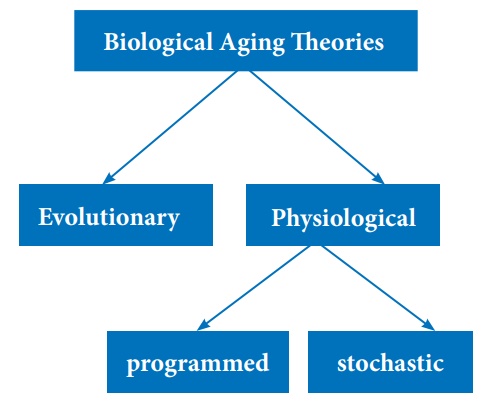Geriatric Care in Nursing - Evoluationary Basis of Ageing | 12th Nursing : Chapter 7 : Geriatric Care
Chapter: 12th Nursing : Chapter 7 : Geriatric Care
Evoluationary Basis of Ageing
EVOLUATIONARY BASIS OF
AGEING
Ageing theories which mainly has been categorise into two main categories
Error Theory
Ageing is a result of
internal or external assaults that damage cells or organs so they can no longer
function properly.
Programmed Theory
Ageing has a biological
time table or internal biological clock
1. Error Theory
Waste accumulation theory
Mitochondrial damage
theory
a) Waste Accumulation Theory
The human lifespan
simply reflects the level of free radical damage that accumulates in cells when
enough damage accumulates, cells cannot survive properly any more and they just
simply give up.
Genetic mutations occur
and accumulate with increasing age, causing cells to deteriorate and
malfunction RNA molecule is highly susceptible to oxidative stress
b) Mitochondrial Damage Theory
It is well known that
mitochondrial DNA is much more oxidized with age than nuclear DNA reactive
oxygen species are continuously generated in the mitochondrial electron
transport chain.
2. Programmed Theory
a. Immunological Theory
The immune system is
programmed to decline over time which leads to an increased vulnerability to
infections, disease and thus aging and death. It is well documented that the
effectiveness of the immune system peaks at puberty and gradually declines
there after with advance in age. eg. as one grows older antibodies lose their effectiveness.
Biological Aging Theories

a) Evolutionary
·
Once an organism has produced viable offspring its body is no
longer needed. It then ages and dies.
·
Certain genes may be useful in early life but detrimental in later
life.
·
Late acting genes have not been removed because they act after
reproduction.
b) Physiological
·
Programmed theories maintain that ageing occurs due to intrinsic
timing mechanisms and signals. eg. Genetic timers.
·
Stochastic theories maintain that ageing occurs as the result of
chance or accidental events. eg. free radical damage.
Related Topics